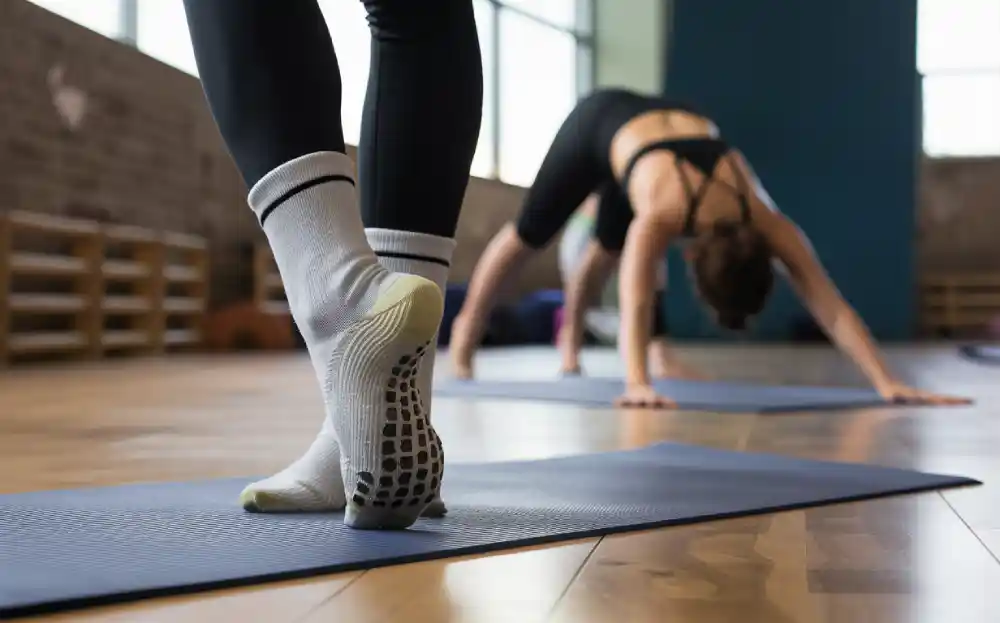
Do you really need grip socks for yoga or Pilates? If you’ve ever wondered whether they’re worth it, the answer lies in their benefits: better grip on the mat, improved hygiene in group classes, and greater stability in every movement. In this guide, we’ll explore practical questions such as Do I need grip socks for yoga? How long do grip socks last? and What are the benefits compared to regular socks? If you’re unfamiliar with the basic definition of grip socks, check out our complete guide to what grip socks are before diving in.
So, what makes them a must-have? It’s their ability to combine support, stability, and comfort. Whether you’re holding a yoga pose or performing dynamic Pilates exercises, grip socks help you maintain proper alignment and prevent slipping. These socks provide the extra support needed to enhance your practice, making them a key accessory for anyone serious about their fitness journey. Curious to know why grip socks are such a game-changer? Read on to discover how they can elevate your workout and become an indispensable part of your fitness gear.
Do You Really Need Grip Socks for Yoga and Pilates?
Grip socks are different from regular socks due to their non-slip soles, typically made of silicone or rubber, which help keep your feet firmly planted during workouts. This added traction prevents slipping, allowing you to focus on your form, whether you’re holding a yoga pose or performing Pilates exercises. The snug fit, cushioned soles, and arch support help improve stability, reduce foot fatigue, and enhance posture.
These socks are made from breathable, moisture-wicking materials like cotton, nylon blends, and spandex, ensuring comfort during intense workouts. Some high-end socks even feature antimicrobial treatments to keep them fresh.
Why Grip Socks Matter for Hygiene and Safety in Yoga & Pilates

Practicing barefoot in a shared studio means direct contact with sweat, dust, or even bacteria on the floor. Grip socks act as a hygienic barrier while also preventing slips. This is especially important in Pilates reformer classes, where maintaining a secure footing reduces the risk of injury. For a deeper dive into performance benefits, read our breakdown of grip sock benefits for fitness.
How Long Do Grip Socks Last?
The benefits for barre, dance, and other floor-based workouts
On average, high-quality grip socks last 6–12 months, depending on how often you use them and how you care for them. Frequent washing and high-intensity classes may shorten their lifespan, while rotating pairs can extend it. If you’re curious about how to extend the durability of your grip socks, see our section on washing and caring for them.
Grip socks for general fitness and rehabilitation
Grip socks also serve a valuable role in general fitness and rehabilitation. For those recovering from injuries or participating in low-impact exercises, these socks offer stability and support during balance-focused workouts. Their non-slip soles allow for smoother, more controlled movements, reducing the risk of further injury, helping users perform exercises with more confidence and less strain on vulnerable areas.

What Socks Offer Traction on Yoga or Pilates Mats?
If you’re asking, “What socks offer traction on yoga or Pilates mats?” the answer is clear: grip socks designed with silicone or rubber soles. Unlike regular cotton socks that slide on smooth mats, grip socks lock your feet in place. Their design was originally inspired by non-slip hospital socks but has since evolved into a must-have accessory for yoga, Pilates, and barre.
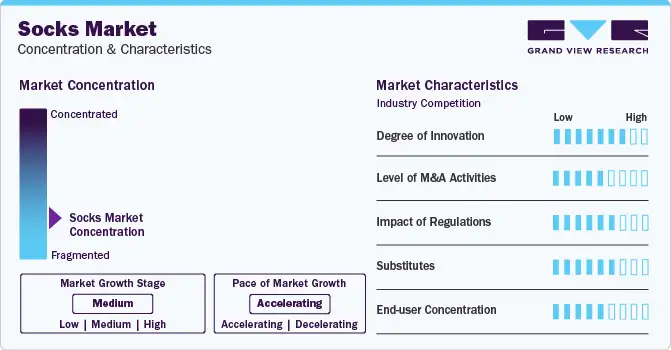
- Market Demand Growth
The demand for anti-slip socks has seen significant growth, particularly in the sports and fitness sectors. According to a report by Grand View Research, the global market for performance socks, which includes anti-slip varieties, is expected to expand at a compound annual growth rate (CAGR) of 6.8% from 2024 to 2030. This growth is largely driven by an increased focus on sports safety, injury prevention, and the rise in popularity of activities like yoga, Pilates, and fitness training. The adoption of grip socks in popular sports like football, basketball, and even activities like barre has further fueled demand. In particular, football and basketball players, who require enhanced traction and stability, have contributed significantly to the surge in demand for these specialized socks, with the market for sports-specific socks expanding at a rapid pace. - Development trend
Looking ahead, the market for anti-slip socks is expected to continue evolving, with ongoing innovations in material technology and anti-slip grip designs. Future developments may include advanced fabrics with superior breathability, moisture-wicking, and odor-control properties, alongside enhanced grip technology that provides more durable and long-lasting traction. Additionally, we can expect increased customization options, with socks designed for specific sports or individual preferences. As more consumers recognize the value of anti-slip socks for injury prevention and improved performance, the market will continue to grow, becoming an essential part of athletic and fitness gear.
Are Grip Socks Worth It for Group Fitness and Pilates Studios?
Arch support
Arch support is one of the most important considerations, particularly for those engaging in floor-based exercises like yoga and Pilates. Proper arch support helps maintain foot alignment, reduces strain, and prevents fatigue during extended sessions.
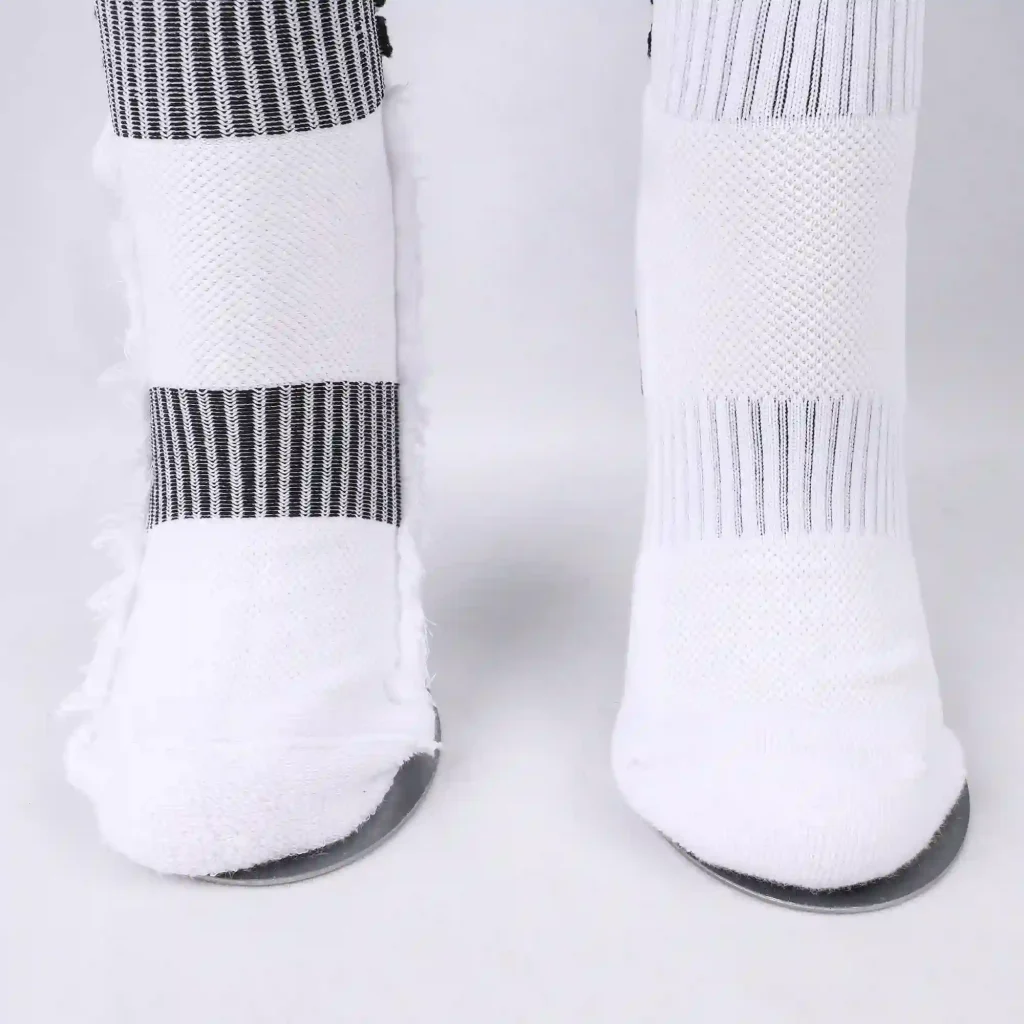
Breathability
During intense physical activity, your feet can easily become sweaty, so choosing socks made from breathable fabrics ensures that moisture is quickly wicked away. This reduces the risk of blisters and helps prevent odors, so you can focus on your workout without discomfort.
Fit and Size
A well – fitting pair of socks ensures that they stay securely during your practice, offering optimal stability and support. Socks that are too loose can cause discomfort or bunching, reducing traction and hindering performance. Check the size chart and measurements helps you find the perfect fit for your feet. With the perfect fit and carefully chosen features, grip socks can enhance your workouts, offering the support, comfort, and stability you need to perform at your best.
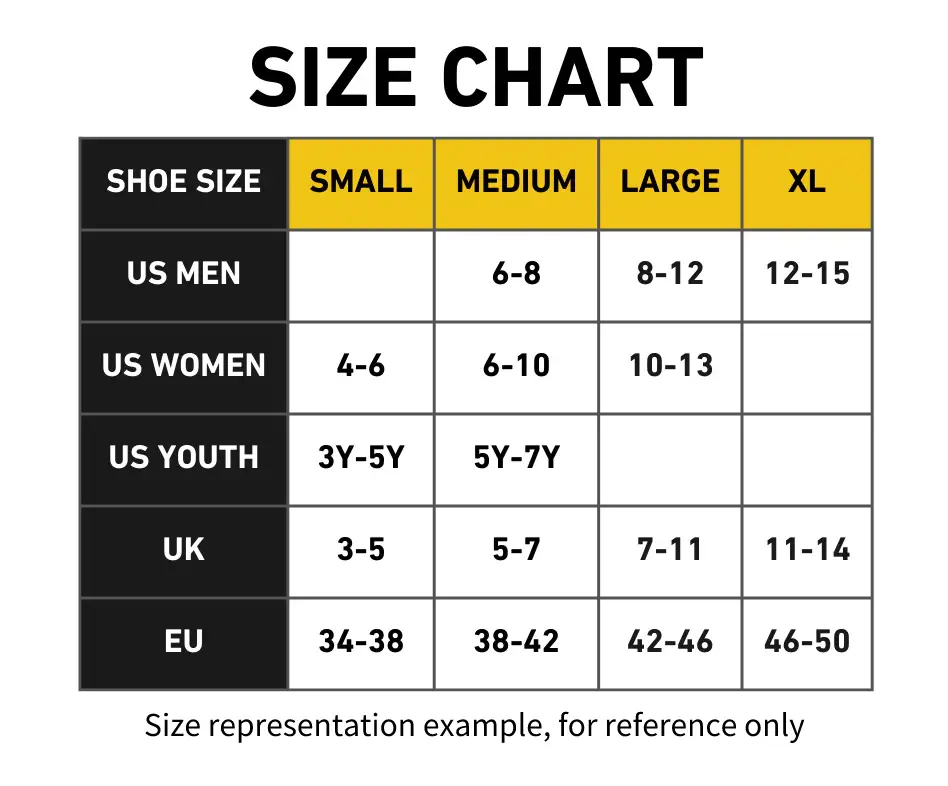
Materials
In terms of construction and durability, look for socks made from high-quality, resilient materials like spandex, nylon, or cotton blends. These fabrics provide flexibility, breathability, and softness while ensuring comfort during wear.
Thickness
Thicker ones are generally more durable, such as those with cushioning soles and grip technology, as their soles tend to wear out more slowly.
Anti-slip Design
Some grip socks feature anti-slip designs on both the inside and outside of the sock. The inside grip works to prevent the sock from shifting on your foot, while the external grip enhances traction on the surface you’re exercising on. Depending on the type of activity you plan to engage in, you may want to select socks with both types of grip.
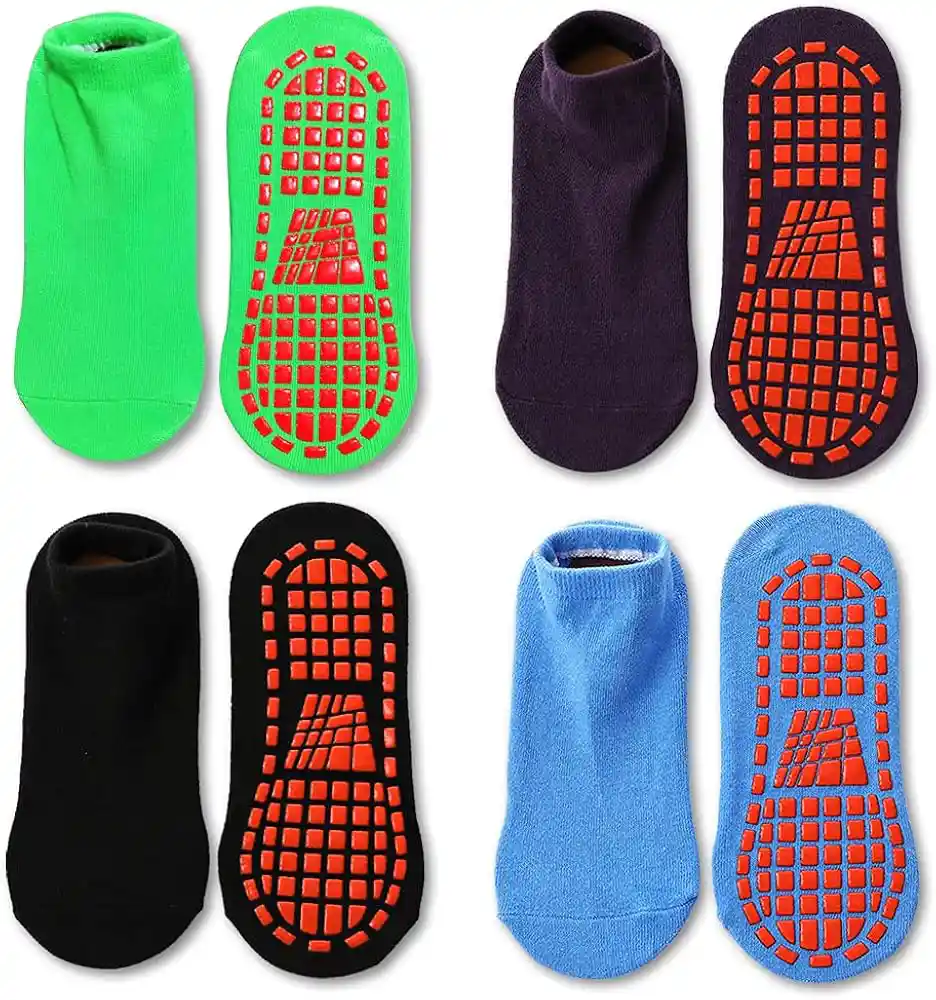
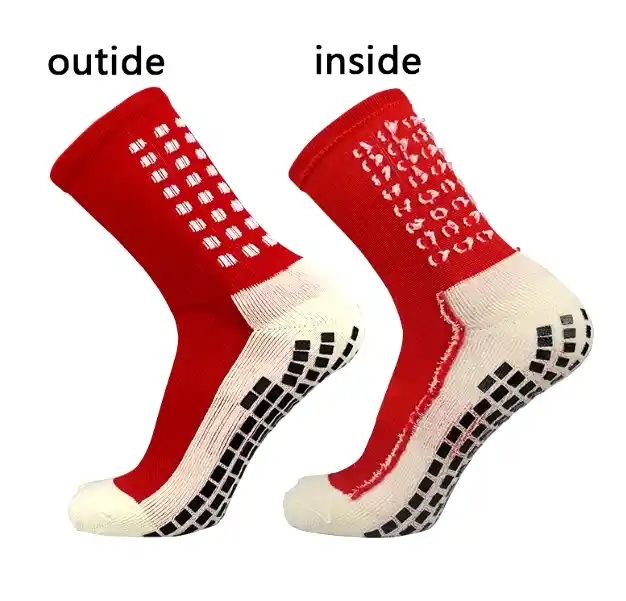
Color Matching
Consider color matching when selecting your grip socks, especially if you’re using them in a team or group setting. For personal use, selecting socks in colors that align with your style and preferences can also boost your confidence during workouts. Whether you prefer classic black, bold patterns, or vibrant colors, finding a pair that suits your personality adds a touch of fun to your routine.
Type and Price
Prices for grip socks can vary based on factors such as brand reputation, material quality, and performance features. There are three main types of grip socks: silicone, pvc and flocking fabric. While premium brands may cost more, the long-term benefits they provide, such as enhanced comfort, durability, and injury prevention, offer significant value. Learn about the material and price of different grip.
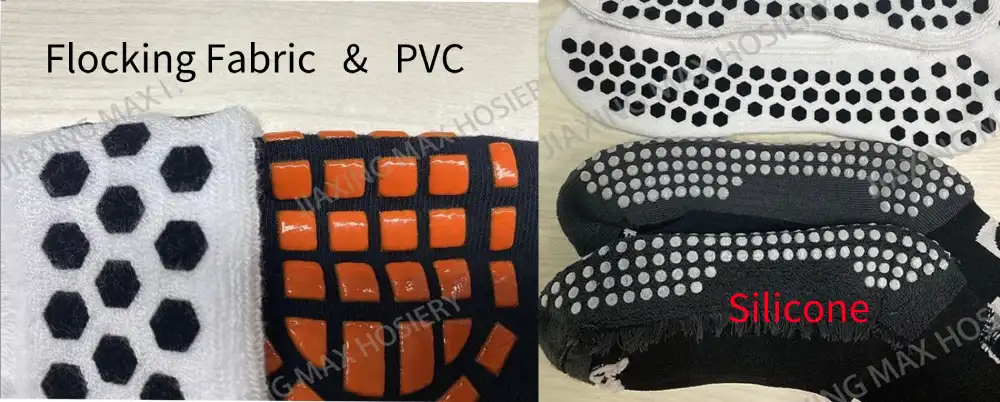
Brand and Quality
Pay attention to brand and quality when choosing your socks, as well-established brands often offer superior performance and reliability. Reputable companies tend to invest in better materials and more rigorous testing, ensuring that their products provide the stability, comfort, and durability you need. Choosing a trusted brand can give you peace of mind that the socks will meet high standards, offering effective traction, a secure fit, and long-lasting wear.
Tips for Choosing the Best Grip Socks for Yoga & Pilates
For sports like football, athletes often wear anti-slip socks first, followed by traditional stockings or team socks with the feet cut off. This layering technique ensures that the grips on the anti-slip socks make direct contact with the sole of the foot, offering maximum traction and preventing any slippage. The interface between the socks is typically secured with tape to keep everything in place during intense movements.
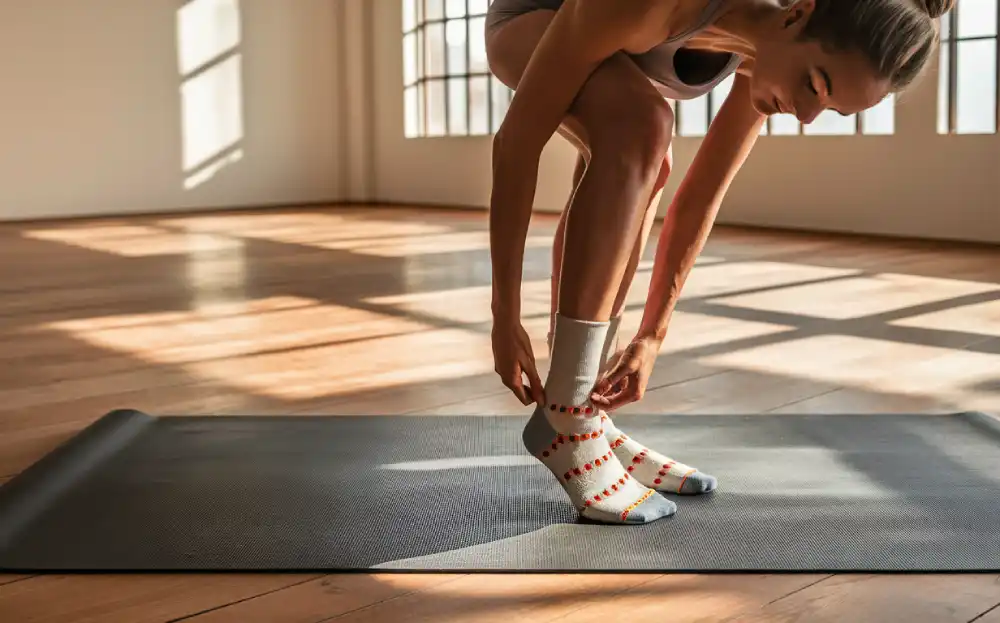
For activities like yoga, Pilates, or barre, grip socks are typically worn on their own. The non-slip soles provide stability on mats or smooth floors, helping you maintain balance and reducing the risk of injury.
In everyday life, especially when walking on smooth floors at home, grip socks are a practical choice. They enhance stability on slippery surfaces, offering added safety for light activities or simply moving around the house. Whether for sports or daily use, grip socks provide improved traction, comfort, and confidence, no matter the setting.
How to Care for Your Grip Socks

- Washing and drying tips
Proper care is essential to maintain the effectiveness and durability of your grip socks. Wash them in cold water to prevent shrinking or loss of elasticity. Avoid harsh detergents, as they can damage the materials over time. For best results, wash your socks inside out and use a mesh laundry bag to protect them from tangling or damage.
When drying, avoid high heat, as it can weaken the fabric and cause deformation. Air-drying is the safest option; lay the socks flat or hang them in a well-ventilated area, out of direct sunlight. If you must use a dryer, choose a low-heat setting to preserve the grip and fabric. - Proper storage and usage
To extend the lifespan of your grip socks, store them in a cool, dry place, away from moisture or extreme temperatures. Keep them away from sharp objects that could tear the fabric. For added protection, consider storing them in a drawer or container to avoid stretching.
It’s also important to use your socks appropriately. Avoid wearing them on harsh surfaces like gravel, which can damage the grips. If you use your socks frequently, rotate between pairs to reduce wear and tear on a single pair. - It’s time to replace your grip socks
If the grips begin to lose their effectiveness, or if the fabric starts to tear or show signs of wear, it’s time to replace your grip socks. Regularly inspect them for any signs of damage to ensure they continue to provide the necessary support and traction.
FAQs
Do I really need grip socks for Pilates?
Yes. Most Pilates studios recommend or even require grip socks for safety and hygiene. The non-slip soles help you stay stable on the reformer machine and prevent slipping during floor exercises. They also provide a protective barrier in shared studio spaces, reducing the risk of bacteria exposure.
Do you need grip socks for yoga?
While yoga can be practiced barefoot, grip socks are a great option if you want more traction on the mat, especially in hot yoga or group classes. They prevent slipping in sweaty conditions, support proper alignment, and are more hygienic than going barefoot in a studio.
How long do grip socks last?
On average, high-quality grip socks last 6 to 12 months with regular use. Their lifespan depends on factors like material quality, workout intensity, and how well you care for them. Washing them inside out in cold water and air-drying will help extend their durability.
What are the benefits of grip socks compared to regular socks?
Grip socks provide stability, prevent injuries, and improve hygiene. Unlike regular socks, which slip on smooth floors or mats, grip socks feature silicone or rubber grips that keep your feet secure. They also support posture and reduce foot fatigue during yoga, Pilates, and barre.
What socks offer traction on yoga or Pilates mats?
Only grip socks designed with anti-slip soles provide reliable traction. Standard cotton socks slide on smooth surfaces, while grip socks keep your feet firmly in place, even during dynamic movements. Look for pairs with full-sole grips and arch support for the best performance.
Are grip socks worth it for group fitness classes?
Absolutely. In group settings, grip socks improve safety by preventing slips and falls while offering a hygienic barrier between your feet and the studio floor. They are especially useful in classes that involve balance, stretching, or reformer equipment.
Conclusion: Why Every Fitness Enthusiast Needs Grip Socks
Grip socks are essential for enhancing performance, preventing injuries, and providing comfort during your fitness routine. Their non-slip traction improves stability, while their breathable materials and ergonomic design make them versatile for both workouts and daily activities. Whether you’re a yoga pro or just starting out, grip socks are a game-changer for your practice.
If you’re wondering how to design your own grip socks, we can help! With over 15 years of experience as a leading grip sock manufacturer, we offer custom grip sock services for your brand. Contact us today to bring your unique design to life!
